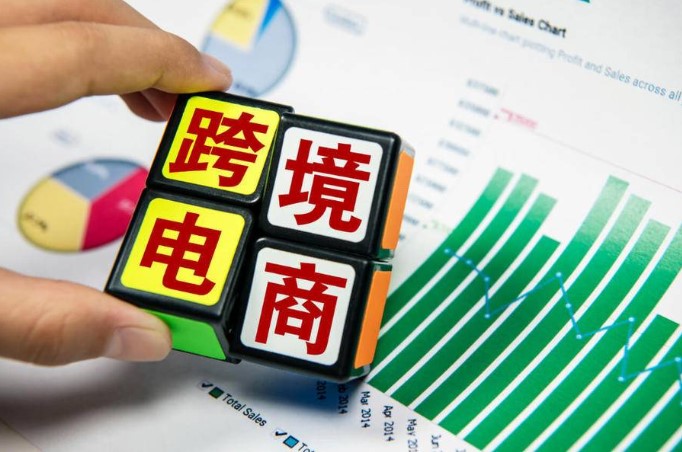The raging epidemic has impacted all walks of life. Looking back at the e-commerce industry in recent years, it can be said to be ups and downs and turbulent.
The epidemic has become a hot shot for the e-commerce industry in 2020, accelerating the development of the industry, but has cast a cold winter for the industry in the past mid-2022.
Nowadays, seeking a way out has become the top priority of many e-commerce companies!
So in 2023 after the epidemic is opened, how should e-commerce people become popular?
Content is king
Live broadcast merchants should be familiar with content e-commerce. In fact, there will be many strange live broadcast forms in 2021.
For example, the Snow Mountain Live broadcast of Yaya Down Jacket, the Herbalife Live Broadcast Room with the Palace Style, and the later Beautiful Girl Disco Live Broadcast, and the Shouting Live Broadcast Room with Dare to challenge Luckin.
At the beginning of these live broadcast rooms, a gust of storm was set off, with GMVs reaching hundreds of millions, and at the same time, there were endless streams of live broadcast rooms that followed the trend and imitate them.
But soon, as the freshness passed, these live broadcasts were instantly deserted, and even if they transformed, it would be difficult to reappear.
This is just one of the microcosms of content e-commerce, and does not mean that formal live broadcasts have no effect.
For example, New Oriental’s Oriental’s live broadcast room is considered the best in content e-commerce.
Under the double reduction policy, New Oriental, whose main business is "destroyed", had to lead the teachers to the live broadcast room.
Almost any product in their live broadcast room can be given endless and wonderful background stories by these teachers, and combined with Chinese and English switching, attracting many users to stop and watch, allowing them to absorb knowledge while stimulating their desire to consume.
Oriental Selection proves that there is not only Yo Ho Ho, and they are the top three Douyin sales products for many years, which also prove the feasibility of content e-commerce.

Another representative is Crazy Brother Yang. He interprets content e-commerce in a stylized way of selling goods, replaces the traditional product introduction link with funny performances, and uses this to bring goods in reverse, so that consumers can watch it happily and buy it with confidence, becoming a brand image that is difficult to replicate.
Putting aside formal expression, his success with Oriental Selection is inseparable from product selection, quality control, and supply chain.
Because this is also the content presented to consumers, it is an intuitive way to give consumers experience, and it is also a necessary ability that e-commerce cannot avoid.
At present, filling in the shortcomings of the shelves has become the top priority of some platforms. Although live e-commerce is a popular conversion method nowadays, it is not feasible to just live streaming without paying attention to the display form, products, services, supply chains, etc.
Nowadays, consumers' consumption habits have been cultivated and upgraded by the environment. Without strong content, it is difficult to reach consumers. If live streaming is a popular e-commerce tool, then content e-commerce that brings huge traffic is the key to corporate development.
If these two can form a strong complementarity, I believe that merchants may have a chance of more improvement in mid-2023.
Only private domains can maintain stability or growth
"The future commercial competition is private domain competition"
This saying is widely circulated in the industry is based on the environment where incremental growth is no longer and stock is the dominant environment. Because public domain traffic is always random, given by the platform, and passive by merchants, so only by building one's own customer pool is a fundamental need for stable development.
Now more and more companies are pouring into the private domain, and the proportion of topics about private domain user growth increased by 36% in 2021 to 38% in 2022.
If someone asks if the private domain is worth doing in 2023, it means he has been pulled down a lot.
The most prominent feature of private domains is that brands have higher repurchase rates and companies have more stable profit channels.
Generally speaking, high-priced or high-repurchase products are more suitable for private domains, such as cosmetics, health products, etc.
Some products such as garbage bags and scissors that are low-priced and repurchase or high-priced and low-priced are not so suitable for private domains because they are too substitutable and are recommended to sell them through channels.

The core concept of private domain is to be consumer-centric and to have multiple transaction relationships with consumers within the life cycle as much as possible.
The best way is to push the content that every customer really wants without disturbing them as much as possible, which requires the company to label each private domain customer with detailed labels for management.
Fundamentally speaking, private domain is a means to link users, which is also a user-accurate service and a method that can continuously bring benefits to enterprises.
In 2023, private domains will continue to explode.
After all, in this era of data decline, if you want to stabilize the basic market or achieve growth, the only keyword is "customer".
Cross-border e-commerce
As far as the global market is concerned, rapid growth is a past for e-commerce.
In the third quarter of 2022, the U.S. online sales increased by 10.8%, while in the third quarter of 2020, which was previously in the mid-explosion period, the growth rate was 49.7%.
Faced with a more complex macro environment, many people also have many pessimistic expectations for the overall development of retail e-commerce and even the consumer market.
But this does not mean that the "gold mine" of cross-border e-commerce has been dug up.
Although globally, e-commerce has bid farewell to rapid growth, we can still see a booming growth when focusing on specific regional markets.
The fastest growing regions in retail e-commerce in 2022 are Southeast Asia and Latin America, leading the world with 20.6% and 20.4% respectively. Currently, Southeast Asia's GDP growth is less affected by inflation compared with other regions. It is expected that the digital economy will continue to grow at an annual compound growth rate of 17% by 2025.

At the same time, according to Morgan Stanley's analysis, global e-commerce penetration has not yet reached its peak, and the current US$3.3 trillion e-commerce market size is expected to grow to 5.4 trillion in 2026.
It can be seen that in the harsh environment, opportunities have not been overshadowed by the crisis, but in terms of current forms, there are unavoidable higher requirements for the capabilities of brands and merchants.
What is necessary for cross-border e-commerce at present is patience and preparation for gold digging.
First, we must conduct a intensive study on the culture of the target area and achieve the ultimate localized service;
Secondly, we must dig deep into the platform data in the product and find the user profile and positioning;
In marketing, accurately place advertisements and seize important promotional nodes;
Finally, we must ensure a smooth experience in consumer-friendly scenarios such as supply chain and payment links.
Cross-border e-commerce has been developing for many years, and the era of barbaric development has come to an end. Eliminating the drought and reserving the essence is a necessary stage at the moment. Branding and refined layout are necessary for long-term development.
Therefore, cross-border e-commerce sellers must timely consolidate their core competitiveness and take every step firmly, which is the necessary means to take root in 2023!





![#Laogao E-commerce Newsletter# [E-commerce Morning News on September 1st]](/update/1598921722l541795482.jpg)

![#Laogao E-commerce Newsletter# [E-commerce Morning News on April 9]](/update/1617929521l155858694.jpg)

 EN
EN CN
CN
